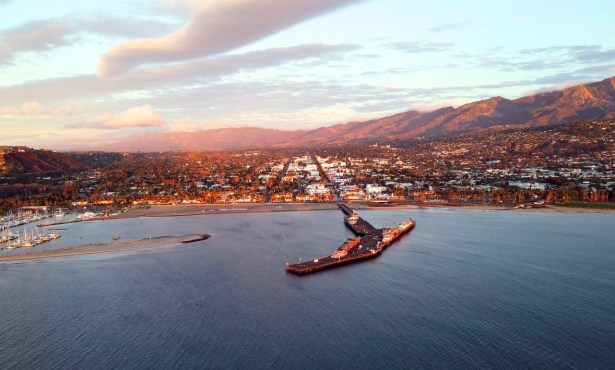Staring Down a Sound Gun
Fish and Game Trashes Diablo Canyon Seismic Testing

California Fish and Game commissioners made their feelings crystal clear this week about controversial plans to conduct seismic testing in the waters around Avila Beach’s Diablo Canyon nuclear power plant. Though they hold no explicit regulatory authority over the project (Fish and Game staff, however, would have to issue a permit for the testing, but has yet to do so) the commission held a special hearing in Sacramento on Monday to get information from the various stakeholders involved with PG&E’s plan to start using high-powered underwater sound guns later this year as it works to understand the risks associated with different fault lines beneath and near the nuclear facility.
After several hours of testimony and public comment, commission president Jim Kellogg, invoking the importance of the state-sanctioned Marine Protected Areas near Diablo, which his agency painstakingly helped create in recent years, opined in no uncertain terms, “They are marine life protected areas, not marine life killing areas. As long as I am here, we are not ever going to recommend anything to the [Fish and Game] department that kills fish.”
Late last month, PG&E gained a key vote of support for its tests from the project’s primary regulatory agency, the State Lands Commission. After a 10-hour hearing and despite an outpouring of public outrage over the tests — which, at times, will create extended periods of underwater sound waves in excess of 250 decibels that are all but guaranteed to have a wide variety of negative impacts ranging from the injury and possible death of whales and otters and dolphins and fish, to temporarily putting commercial fisherman on the Central Coast out of business, to disturbing ancient Chumash villages — State Lands approved the plan and its accompanying Environment Impact Report saying, essentially, that the public benefits of the tests outweigh their many damaging side effects.
As per the State Lands vote, PG&E is tentatively slated to begin its high-powered 3-D seismic imaging November 1, but before that can happen, the energy company needs to gather more permits from folks like Fish and Game and the California Coastal Commission as well as the federal agencies like NOAA and the Army Corps of Engineers.
Responding to an avalanche of public outcry in the wake of the State Lands approval, one that saw Fish and Game’s website temporarily crash after more than 40,000 emails flooded it, Fish and Game commissioners called their special fact-finding hearing, inviting the public and the many regulatory agencies associated with the testing. To that end, after a picture was painted by various state officials of the fundamental need for such seismic testing (i.e., the currently unknown degree to which the Shoreline Fault, discovered in 2008, threatens to one day turn Diablo into a Fukushima-esque disaster site), Fish and Game staff presented the terms of the preliminary permit they are considering issuing to PG&E.
Known as a scientific collecting permit, it would allow certain levels of fish and larvae death associated with the testing while establishing the requirements of on-site monitoring and the threshold at which the testing would be forced to stop. According the testimony of Fish and Game staff on Monday, the current incarnation of the permit allows for “incidental take” of larval and juvenile fish but absolutely no deaths, be they incidental or otherwise, of any protected species or marine mammals. Further, staff reported that they are still figuring out what amount of adult fish death would be allowed by the permit and that the testing would be “immediately shut down” should any of their monitors positioned on test boats witness the death of a bird, protected species, or marine mammal.
PG&E’s Mark Krausse, after highlighting the fact that roughly $8 million of the project’s $64 million price tag will be spent on wildlife monitoring, assured commissioners this week that “What we have in experiential data is that [this testing] is not going to have the type of impacts you guys are worried about.”
Ultimately, though they took no formal vote, Commission President Kellogg, along with Commissioners Michael Sutton and Richard Rogers, all expressed various degrees of concern about the plans, paying particular attention to the unavoidable impacts it will have on wildlife and questioning whether the proposed testing is even necessary. “I’ve seen nothing in our deliberations over this project to convince me that this [seismic testing] is required or necessary,” opined Sutton. Rogers, who calls the Santa Barbara area home, added, “Is this the only way? What about alternative technologies? Can’t we find a way that is less impactful to wildlife?”
Next up for PG&E is a showdown at the Coastal Commission on October 10 in Oceanside.


